The best foam rollers in 2024, tried and tested
Content is created by CNN Underscored’s team of editors who work independently from the CNN newsroom. When you buy through links on our site, CNN and its syndication partners may earn a commission. Learn more
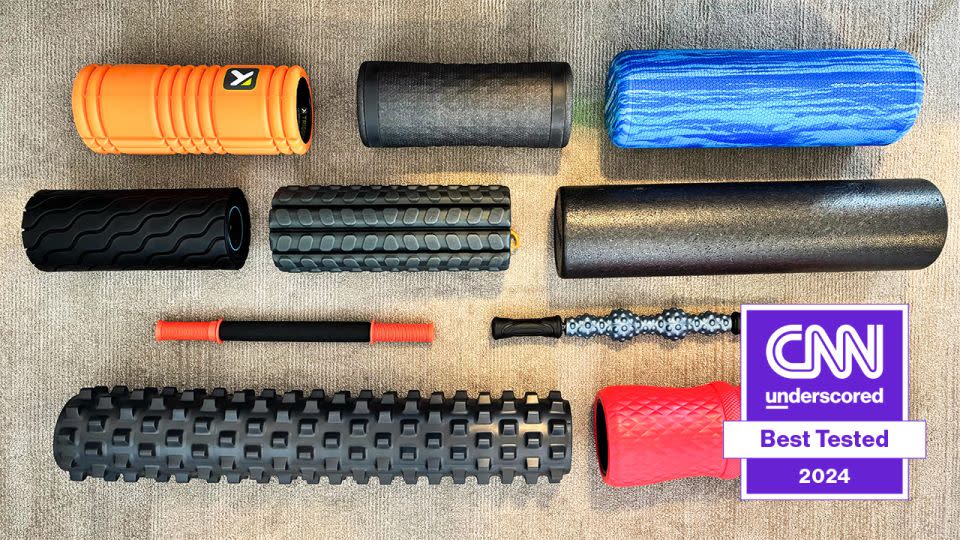
While there are tons of overhyped recovery aids, the foam roller is legit; a 2023 review published in Sports found more positive evidence to support this kind of self-myofascial release (AKA self-massage) than massage guns. Foam rolling for 90 seconds or more immediately increases range of motion, according to a 2021 study published in the Journal of Sports Science & Medicine, and foam-rolling after a workout can decrease soreness up to 72 hours later, older research published in The Journal of Athletic Training determined.
As someone who works out a lot, I know how important recovery and mobility are to maximizing performance. And yet, I don’t spend nearly enough quality time with the foam roller that’s been gathering dust in my closet for the better part of the last few years. Over the course of a month, I started incorporating short foam-rolling sessions into my routine, testing out 11 foam rollers to see which ones offered the best amount of pressure, targeted massage and versatility. These six stood out from the rest.
Trigger Point Grid Foam Roller
Best foam roller
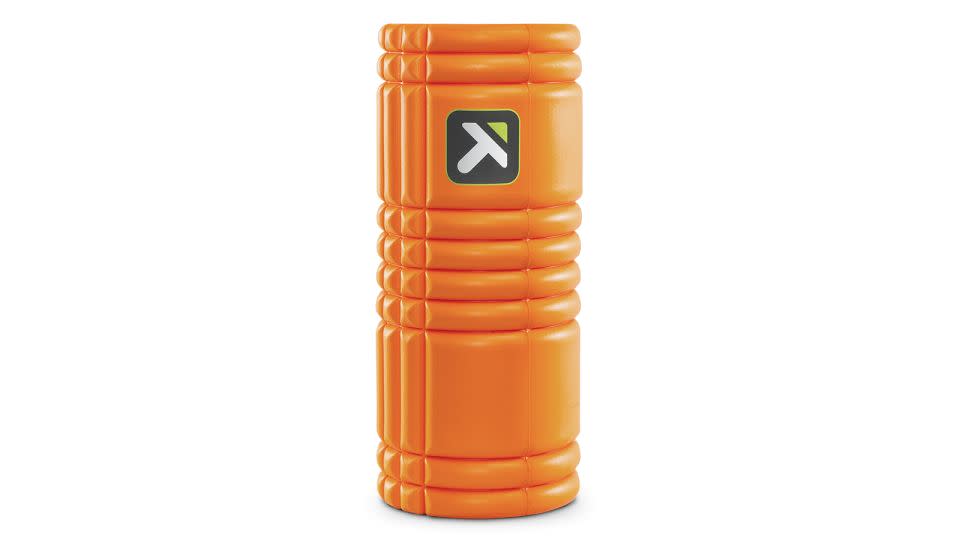
This is the Goldilocks option amongst foam rollers. Not too firm, not too soft, the Trigger Point Grid 1.0’s multi-density foam surface provides just the right amount of pressure to relieve tightness.
Amazon Basics High-Density Round Foam Roller
Best firm foam roller
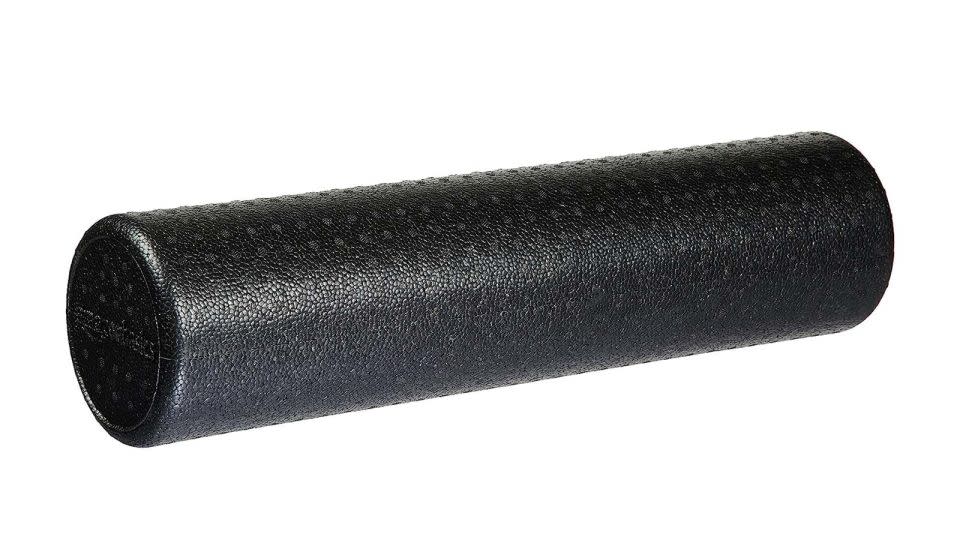
Let the high-density foam push back against sore muscles to get your blood flowing with minimal effort on your part. It’s also extremely budget-friendly.
OPTP Pro-Roller Soft-Density Foam Roller
Best soft foam roller
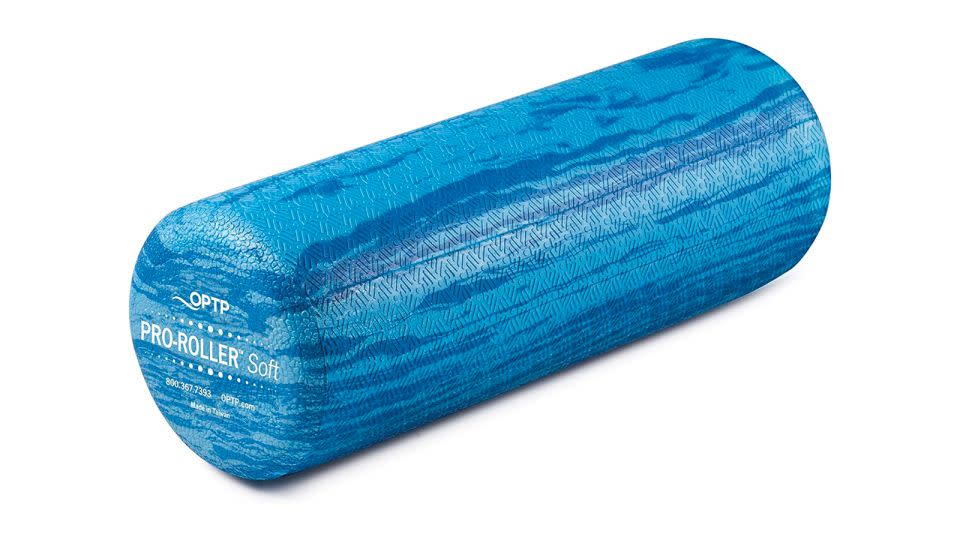
If you skew towards the less intense end of the spectrum when it comes to workout tools, the softer density of the OPTP Pro-Roller offers a gentler experience.
RumbleRoller Textured Foam Roller
Best foam roller for deep tissue massage
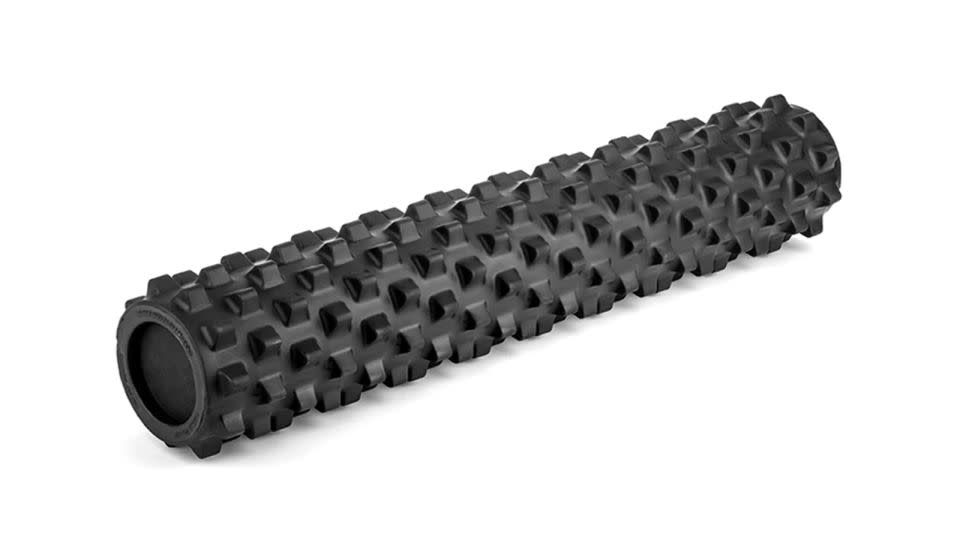
The spiky tread on RumbleRoller’s Xtra Firm foam roller makes breaking up deep knots and adhesions seem easy in a hurts-so-good kind of way (not for foam-rolling novices).
Therabody Wave Roller
Best vibrating foam roller
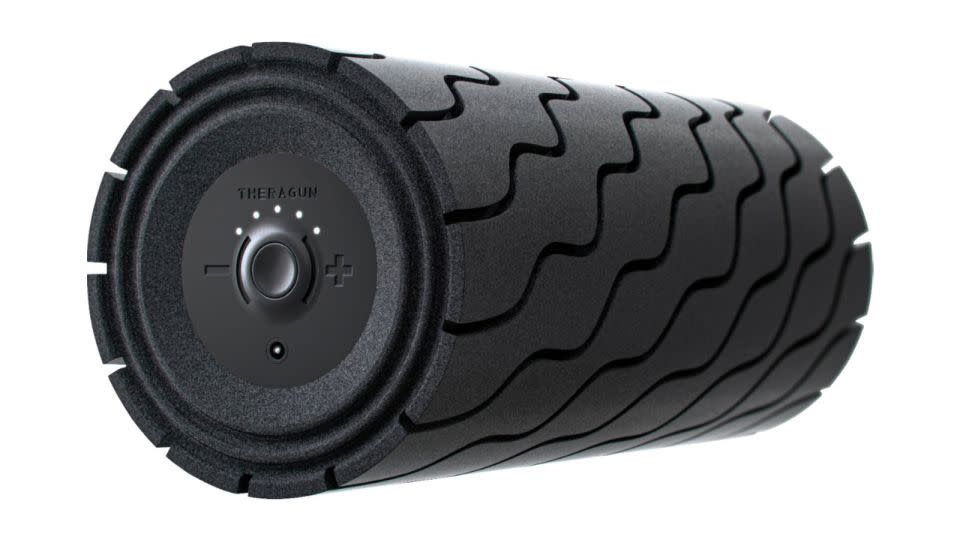
By adding vibration, the Therabody Wave Roller helps you get a little deeper into the muscles without having to apply more pressure. Plus, it gives you guided routines to maximize your time with it.
Tiger Tail 18-Inch Massage Stick
Best handheld foam roller
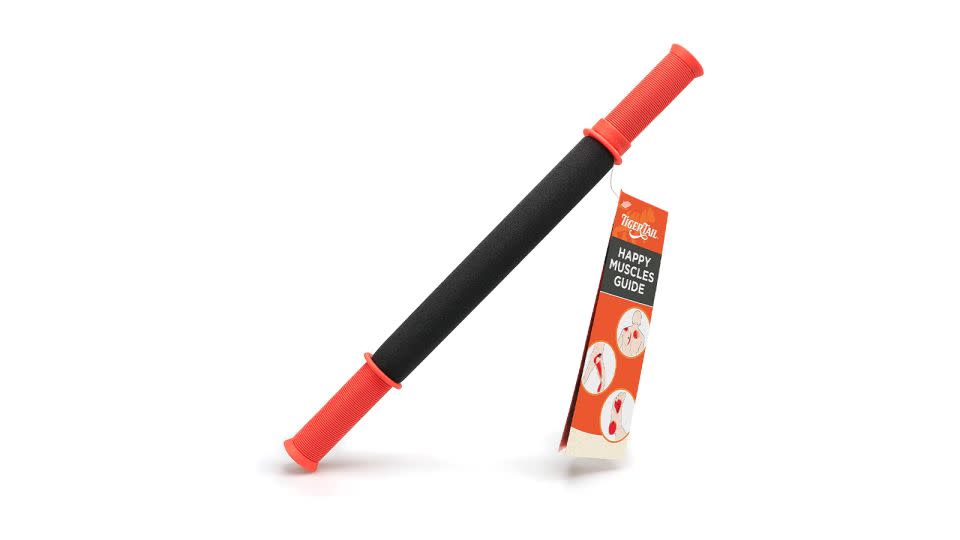
Tiger Tail’s massage stick is the most portable of the bunch; stick it in a gym bag, purse, or carry-on to roll out your muscles wherever you want, without prostrating yourself across the floor.
Best foam roller: Trigger Point Grid Foam Roller
$37 at Amazon, REI and Trigger Point
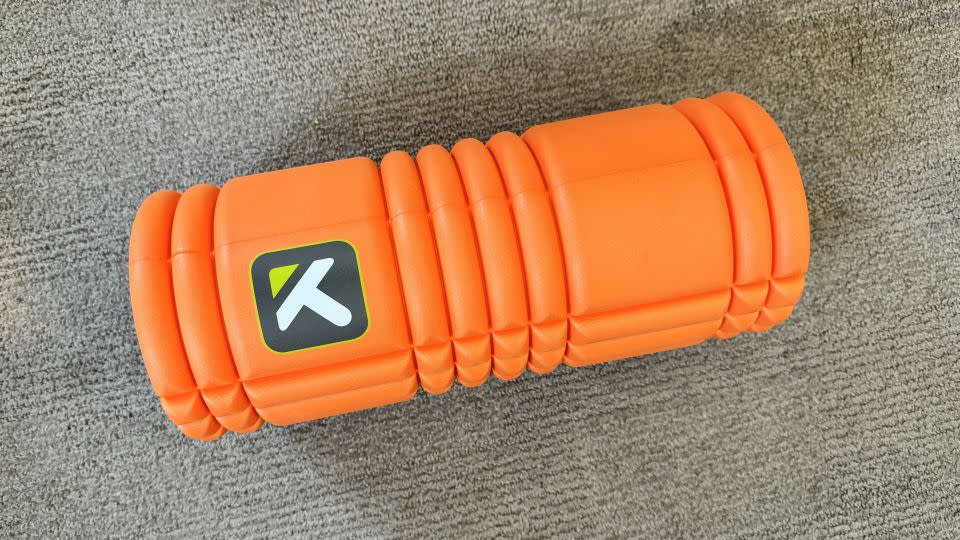
I’ve been using versions of the Trigger Point Grid Foam Roller for over a decade. Trigger Point was one of the brands that brought foam rolling into the mainstream and now offers foam rollers in all kinds of shapes and sizes — but the Grid remains one of its most popular and best-selling products, for good reason.
The Grid part of this foam roller’s name refers to the three-dimensional, multi-density foam surface. Those gaps allegedly allow tissue to aerate while you roll, but I mostly felt like they allowed the different-sized sections to better dig into my muscles. This roller is not as overtly textured as others we tried, but Trigger Point designed their “distrodensity zones” to replicate the feeling of a massage therapist’s hands. Though I wouldn’t go that far, I liked that I could shift my muscles over to the larger sections for a more firm massage, then over to the smaller sections for more give.
What makes the Grid such a crowd-pleaser is that it can work for beginners and advanced rollers alike. It has a hard, hollow core, which makes it firmer than traditional foam rollers, but that core is hand-wrapped in EVA foam to provide enough cushioning for your muscles. EVA foam also tends to be a more durable material —I’ve had the same Trigger Point foam roller for years at this point, and it still provides the same amount of pressure as when I got it.
The Grid earned top billing because it just checks all the boxes. It’s firm but not too firm; 13 inches is long enough to hit the largest surface areas of the body; and it’s still compact enough to travel with. By stuffing socks and other small items inside the hollow core, I’ve even been able to fit it into a carry-on.
Best firm foam roller: Amazon Basics High-Density Round Foam Roller
$14 at Amazon
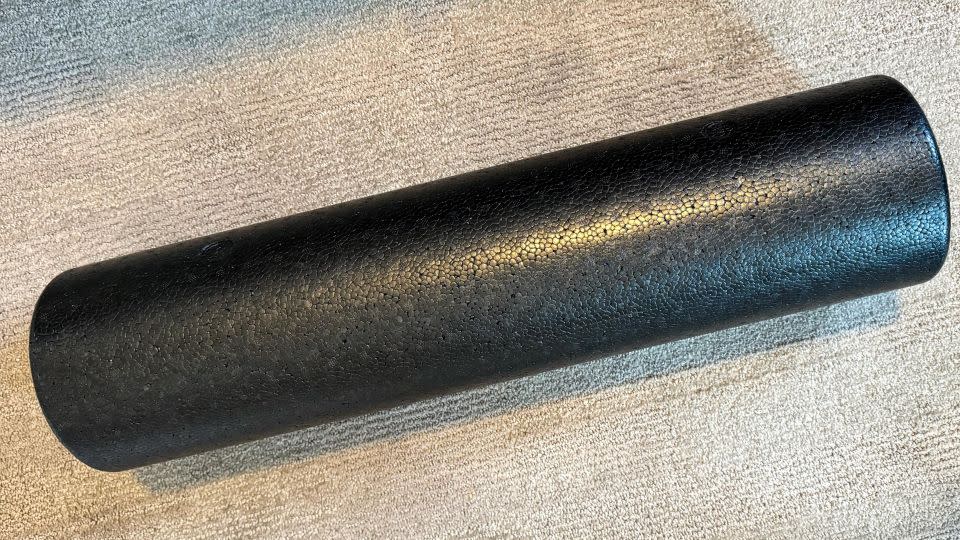
The firmer a foam roller is, the more pressure you’ll feel against your muscles when you use it. In this sense, the descriptor “high-density” simply implies there’s more foam in the roller than there is air, which means it won’t give as much under your body weight.
The Amazon Basics High-Density Round Foam Roller is made from polypropylene, which is a type of thermoplastic. You’ve probably seen some variation of this foam roller in every gym you’ve ever visited; the solid, smooth-surfaced cylinder is a super-common design. Amazon’s option (which weighs just over half a pound) is especially appealing because you can snag it for just under $15.
I liked this one because of its versatility. At 24 inches long and with a 6-inch diameter, it’s a size that allows you to target almost any area of your body — though you can also get it in 12-inch, 18-inch and 36-inch lengths. This size was ideal for targeting the back; I often laid on top of it, the foam roller following the line of my spine, before I even started a workout in order to open up my chest and shoulders. You can even use it in workouts, whether as a prop (to prop your knee up while lying on your side for open book stretches) or a tool (I used it for an advanced core workout).
The only downside to a cheaper foam roller like this is longevity. The polypropylene is pretty sensitive, so if you’re stuffing it in a packed closet or cabinet or regularly butting it up against sharp edges, you’re likely to start noticing small scratches and gouges in the foam. A few missing chunks won’t compromise the function of the foam roller, but you’ll likely want to replace it sooner than a more durable one. Luckily, that’s more manageable with the lower price.
Best soft foam roller: OPTP Pro-Roller Soft-Density Foam Roller
$40 at Amazon
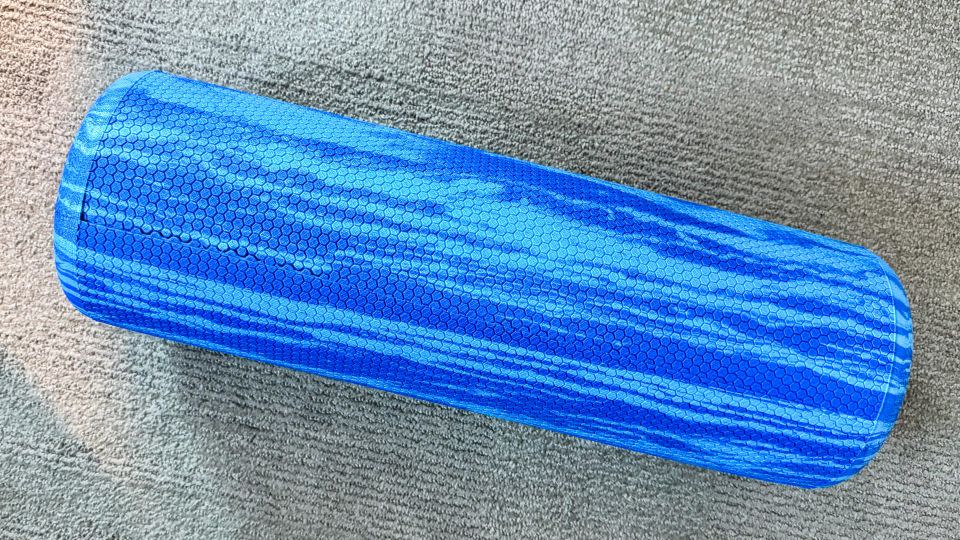
If you’re not a fan of the whole “hurts so good” aspect of foam rolling, you might need a softer roller. A softer roller has more air than foam in the product, which means it’s going to provide way more give or cushioning when you put your body on top of it. That’s also great for anyone who’s newer to foam rolling and needs to build up their tolerance.
The OPTP Pro-Roller Soft-Density Foam Roller I tried was 18 inches long and 6 inches in diameter, which the company says is ideal for targeting smaller areas such as the IT band, hip rotators, glutes and calves. I definitely appreciated the softer surface on my IT band and hip rotators, which tend to get pretty sensitive when logging 40-mile weeks of running plus strength training. It’s also available in a 36-inch length, with a 6- or 4-inch diameter, the latter of which is meant for anyone who struggles with balance.
When I say soft, I don’t mean pillowy, though. While the closed-cell, heat-molded EVA foam is definitely squishier than, say, the Trigger Point above, you won’t sink into it. Instead, it offers a gentler kind of pressure. The surface is also free of bumps, but there’s a slight texture to it that keeps you from sliding off, even in spandex.
The benefit of a foam roller made of pricier EVA foam is that its meant to withstand heavy, repeated use, which makes this one of the more durable options I tested. That said, a softer foam will eventually lose its shape after being subjected to lots of pressure over time, so that’s something to keep an eye on.
Best foam roller for deep tissue massage: RumbleRoller Textured Foam Roller
$70 at Amazon, Target and Rumble Roller
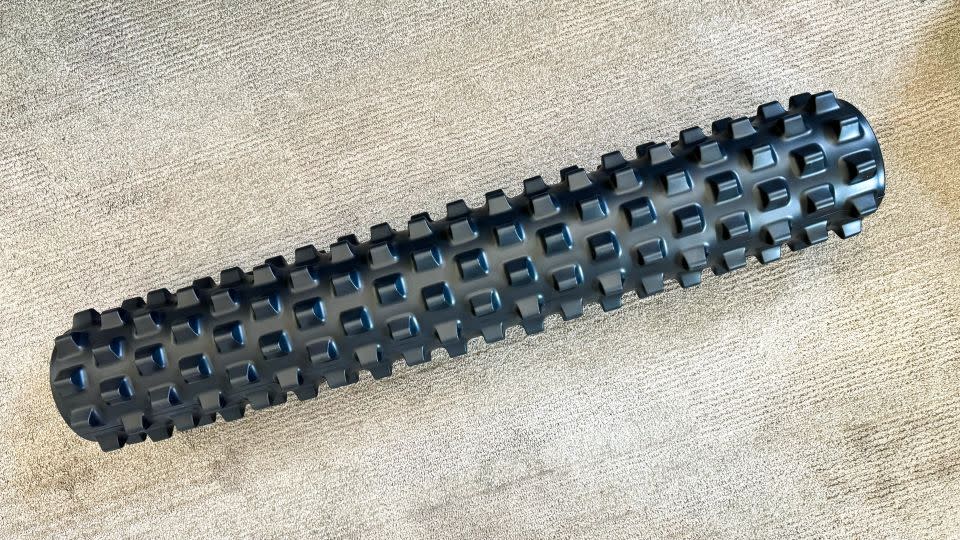
I’ll forgive you if your first impression of this foam roller is to think of it as a torture device. The RumbleRoller Textured Foam Roller claims to be 36% firmer than original, which really means nothing except that you can assume that it’s going to hurt (in a way that makes you feel better, not worse).
While the antibacterial, high-density EVA foam is extremely firm, that deep tissue massage comes from the exaggerated tire tread across the RumbleRoller’s surface. This patented series of bumps really penetrates into your muscles to stretch out your soft tissues and break up any knots. Rolling this one length-wise across my back — I tested the 31-inch long roller, although it comes in two shorter lengths (22 and 13 inches) as well — felt incredible after hours hunching over my computer. (FYI: That back and forth motion intensifies the feeling, although laying there and letting your body sink around the nubs is great, too).
This one comes with a caveat, though: Beginner foam rollers should not be using a foam roller that’s this firm and has this kind of tread. A foam roller that’s too firm can actually cause more damage to your muscles, preventing you from recovering and negatively affecting performance. The company recommends all first-time buyers consider the RumbleRoller Original products instead (they’re still firm! just not this firm); eventually, you’ll be able to graduate to one that provides a deeper tissue massage.
Best vibrating foam roller: Therabody Wave Roller
$149 at Therabody and Amazon or $150 at Best Buy
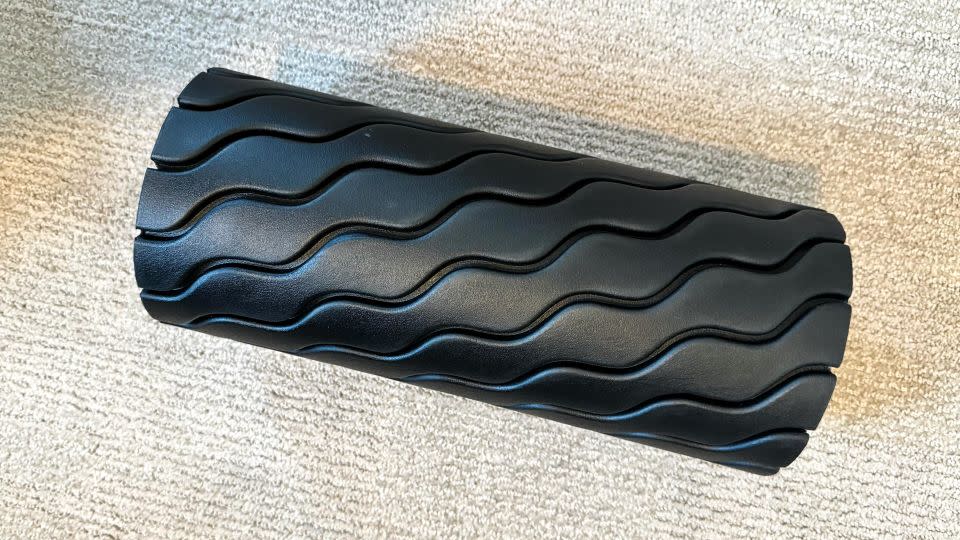
Percussive therapy, which includes vibration, was deemed “possibly more effective” than foam rolling in a 2021 study published in the International Journal of Environmental Research and Public Health. And if you combine it with foam rolling, it not only enhances recovery, but can also potentially increase strength, agility and performance, too, according to research published in 2022 in Sports Medicine - Open. Meet the Therabody Wave Roller.
At first glance, this looks exactly like a traditional foam roller. It’s short and squat (1 foot long with a 5-inch diameter) and the hypoallergenic, high-density EVA foam has a grooved surface with a wavy tread to it. And you could use it as a traditional foam roller. But when you power it on, it offers five different vibration frequencies that you can toggle through with just a press of the power button on the side of the device, depending on which muscles you’re trying to target. (The rechargeable 12-volt internal lithium-ion battery will last three hours when fully juiced.)
Yes, it’s pricey. But Therabody offers a 60-day risk-free trial, plus you’re getting premium materials and Bluetooth access to the Therabody app, where you can do two things: control the intensity of the device and use guided routines tailored to your needs. I particularly liked using the 6-minute Run Recovery protocol — which targets the shins, calves, hamstrings, quads, IT bands and glutes — immediately after a run, but the total-body 12-minute “Recovery Session” felt great after any gym workout.
One of the reasons I like having a vibrating foam roller around is that sometimes, especially after a workout, I don’t want to put in all the effort of applying pressure that self-myofascial requires (exercise is exhausting, OK?!). With vibration technology, I can let the foam roller do some of that work for me.
Best handheld foam roller: Tiger Tail 18-Inch Massage Stick
$40 at Amazon, REI and Target
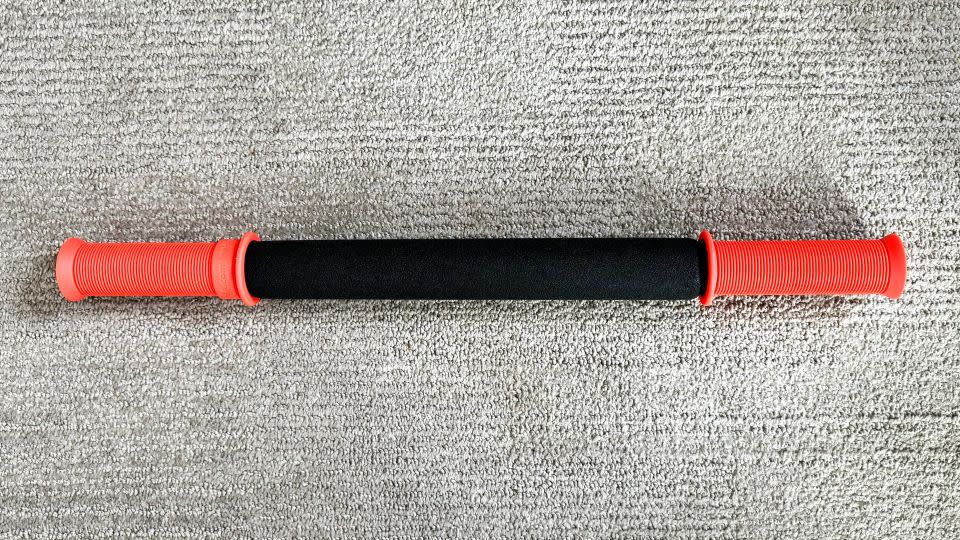
If you think the Tiger Tail 18-inch Massage Stick looks more like a rolling pin than a foam roller, you’re not wrong. This 18-inch stick has 10 inches of firm foam set between two handles; the foam part spins as you roll it up and down any particular body part.
While the company says you can massage more than 95% of your body on your own with this roller, I mostly reserve it for my legs. I find it hard to contort my arms and shoulders so I can not only get at my upper back, but also apply enough pressure. I prefer using this on my legs because the firm design doesn’t bend; that allows you to direct the pressure exactly where you want it — like that tiny knot towards the bottom of my hamstring that always needs extra attention. Even though the medical-grade, closed-cell, non-porous, zero-rubber/latex, non-absorbing foam is pretty firm, you’re not going to experience the same level of pressure on your muscles as you would with a traditional foam roller that sits on the floor. But since you’re holding it by the handles (which are made from a non-slip material), you control exactly how much pressure you want to exert — and can easily change that as you move it.
This is another tool I’ve used somewhat consistently over the years. Because it’s so slim and short, I’ve been able to pack it for almost every recent road race — and I’ve even put it in a pre-race gear bag so I could use it before the start and on my tired muscles after the finish.
How to choose a foam roller
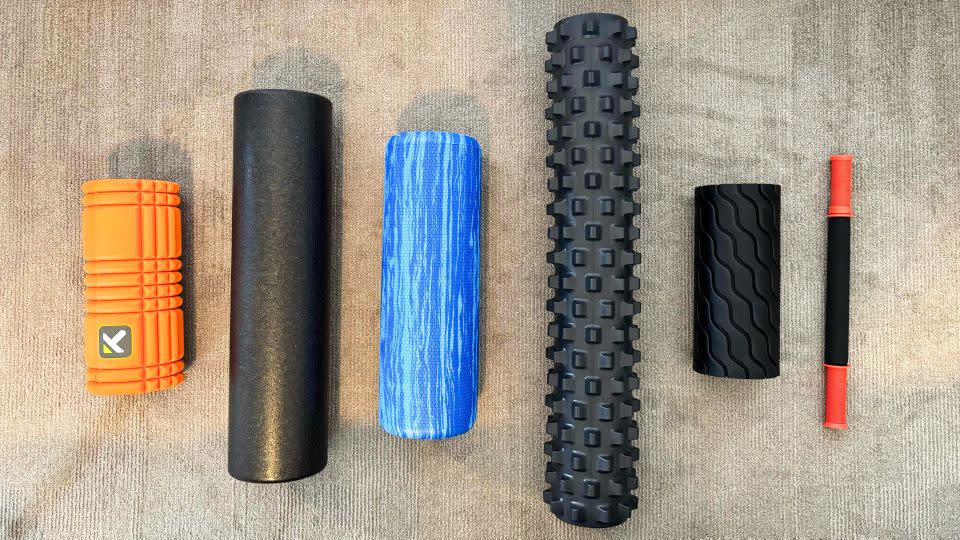
Like so many pieces of fitness equipment, choosing a foam roller mostly comes down to personal needs and preference. What body parts you’re most often going to target, whether you’ll be using it at home or traveling with it and how intense of a massage you want will all help determine which one is best for you.
The most important feature of a foam roller is the density of the foam. Foam rollers work by pressing into your soft tissues (including your muscles and fascia, the connective tissue that surrounds and holds your organs, bones, muscles and more in place) to help relieve muscle tightness, soreness and inflammation. The firmer the foam roller, the deeper the pressure it will provide. Some brands use the word density, others may use firmness, cushion or “give,” but most foam rollers fall into three main categories: soft, medium or firm. If a foam roller is too soft, it won’t provide enough pressure, but if it’s too hard, it can cause pain and bruising (not ideal). Make sure to choose a density that works for your body.
Next you want to consider the size and shape of the foam roller. A smaller foam roller (think 12 to 24 inches) will target most parts of the body and is a little more portable; a larger foam roller (up to 36 inches) can be used to address larger body areas (like your upper back). Most foam have the same basic cylindrical shape, but some have curves, bumps, ridges or points that dig deeper into your muscle and fascia — these are generally meant for more experienced users, as they can feel a lot more intense.
Finally, you’ll want to consider durability. Foam rollers are, for the most part, pretty affordable. From a materials perspective, foam rollers made from EVA foam are going to last the longest; that foam (which you’ll also find in yoga mats and running shoes) is meant to withstand heavy, repeated use. Cheaper options and materials may initially work well, but can lose some of their firmness over time and the foam is more likely to get gouged.
How we tested
A couple of years ago, a study in the International Journal of Research in Exercise Physiology determined that this particular protocol was scientifically proven to loosen up your lower back and hamstrings: Participants rolled their lower back, butt, quads, IT bands, hamstrings and calves for 20 seconds each, then repeated that sequence three times for a total of 60 seconds of rolling on each body part. So that’s what I did, in addition to rolling my back and shoulders daily. During those three minutes (which I repeated multiple times with each foam roller over the course of a month), I evaluated the firmness, topography, size and shape, versatility, portability and special features of each product. Check out the full breakdown of how I tested below.
Materials
Density: We tested how firm each foam roller was with an informal depth test, seeing how far we could push into each surface layer.
Texture: We noted the surface of each foam roller and, for those that weren’t flat or smooth, compared how prominent the ridges, bumps and knobs were.
Function
Portability: We evaluated the size, weight, shape and design to consider how easy it would be to travel with each foam roller.
Versatility: We tested the foam rollers on multiple areas to see how many muscles each could reach (and how well they could do that) in order to highlight the body parts best served.
Features
Bonus features: When relevant, we tested additional elements such as the power of vibration, the Bluetooth capabilities, the quality of the handles and ease of collapsing and expanding devices.
Other foam rollers we tested
Hyperice Vyper 3
$199 at Hyperice
Similar to the Therabody Wave Roller, the Hyperice Vyper 3 uses vibration to help increase blood flow and relieve tight muscles. The Vyper is made from eco-friendly polypropylene (with rubber bands on the outside of its hourglass shape for stabilization purposes) and has a high-torque 34W motor that delivers three levels of vibration. It’s powered by a rechargeable 12V lithium-ion battery that lasts for about two hours, and pairs via Bluetooth with the Hyperice app for guided sessions.
Brazyn Life The Morph Collapsible Foam Roller
$70 at Brazyn Life
No matter how small they are (unless we’re talking about a handheld massage stick), foam rollers aren’t really portable enough to, say, pack in a suitcase. Except for the Brazyn Life The Morph Collapsible Foam Roller, which expands into a full-size, 1.5-pound, 5.5-inch-diameter foam roller with just a pull of the cords on each end; push the disks towards the inside, and it will flatten back out. And it’s not flimsy — it can support up to 350 pounds.
Roll Recovery R4 Body Roller
$60 at Roll Recovery
Unlike the many smoother, flat-surfaced rollers I tested, the Roll Recovery R4’s high-density EVA foam wrapped around a hollow core has subtle curves to it, and each side swoops in towards two raised ridges that surround a divot for your spine. But you don’t just have to use this one on your back — that design is great for digging into your IT band, lower legs and shoulders.
ProsourceFit High-Density Foam Roller
$22 at Amazon
This is essentially a dupe for the Amazon Basics High-Density Round Foam Roller. It’s also available in multiple sizes (12, 18, 24, and 36 inches long with a 6-inch diameter) and made from polypropylene foam. I’ve been using this one in my gym for months and can say it feels pretty much identical to the other one — and, in that case, I’d always choose the cheaper option.
Pro-Tec RM Extreme
$38 at Amazon
Similar to the Tiger Tail Massage Stick, the 21-inch Pro-Tec RM Extreme is a portable, handheld foam roller — but this one is contoured with ridges and bumps that apply different amounts of pressure as you roll it over your muscles. I especially liked that feature for meatier areas like my quads or back, but found it to be a less versatile option overall.
Note: The prices above reflect the retailers' listed price at the time of publication.
For more CNN news and newsletters create an account at CNN.com

